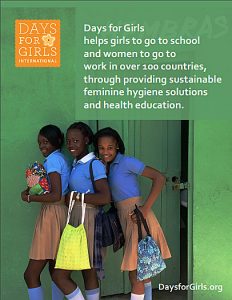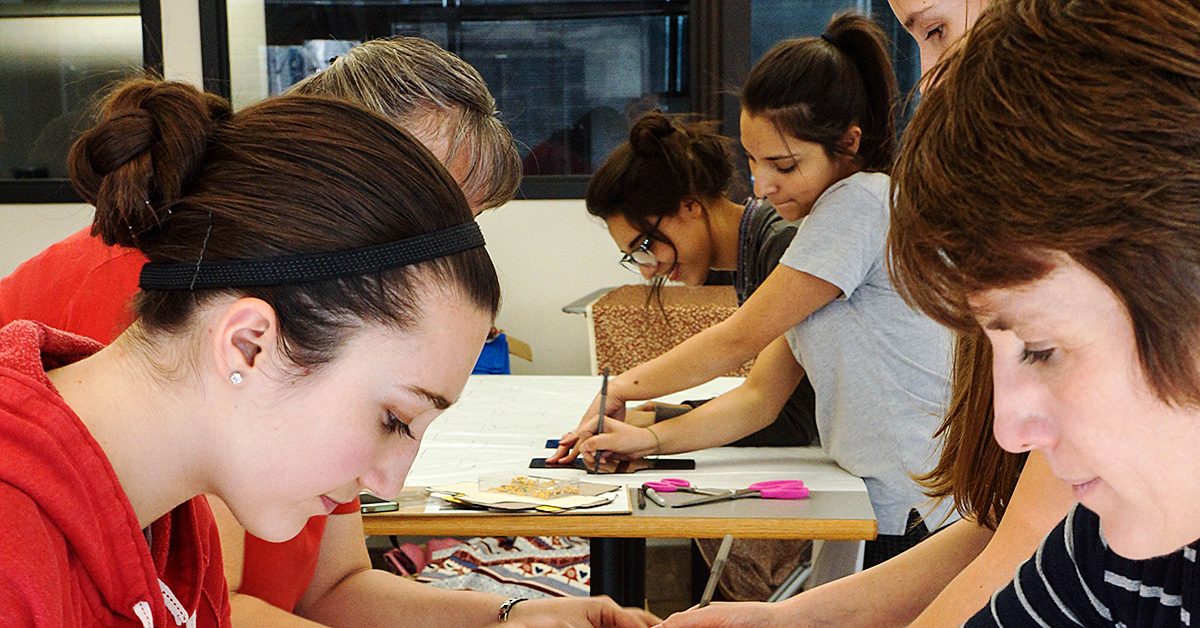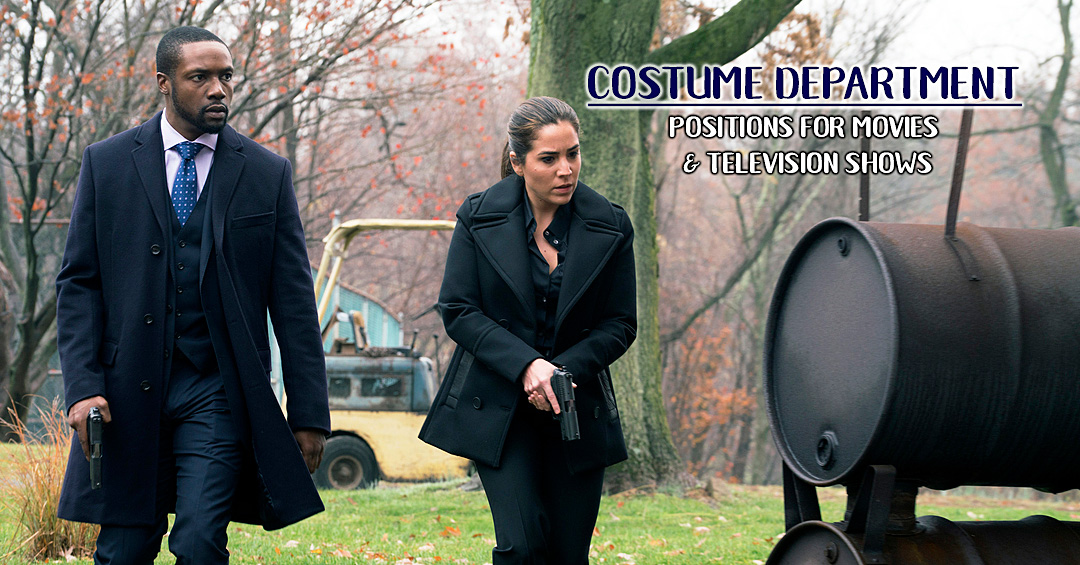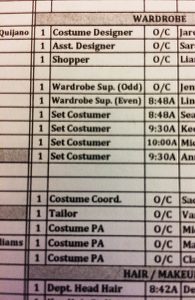Sewing is great. Sewing with others is even better. Sewing with others to benefit a great cause is the best! Lucky for you, there’s an event happening on April 8, 2017 where you can sew to help a great cause – sustainable feminine hygiene!
Days for Girls

Days for Girls International helps girls go to school & women go to work in more than 100 countries.
Days for Girls International helps girls go to school and women go to work in more than 100 countries. They provide sustainable feminine hygiene solutions and health education in areas where women and girls would otherwise be isolated during their monthly period.
So far, their work – and the work of great volunteers like you – has been shown to give back six months of living for just three years of use. That may not seem like much to you, but to girls and women in areas where they’d otherwise be confined during their period, this is huge!
It’s not just six months of life; it’s six months of living, of thriving. It’s six months of dignity and safety and its progress towards educating the community and changing the perceptions about women around the world.
What You’ll Make
The feminine hygiene kits are assembled by great volunteers! Here’s a quick look at what’s inside.
- A fashionable drawstring bag. This is durable and stylish so she can carry her feminine hygiene kit to school or work for up to three years.
- Moisture barrier shields. These shields hold the liners in place and stop leaks. They’re pre-loaded to demonstrate how to adjust based on flow.
- Travel size soap. The distributing organizations provide more soap in the country of distribution. Travel size saves on shipping costs and weight.
- Instruction sheet with pictures.
- Two pairs of panties girls’ sizes 10 – 14.
- Wash cloth. In addition to being used to cleaning, it’s a great way for educators to introduce hygiene topics.
- Eight absorbent trifold pads. These are washable and reusable. They don’t look like pads in the U.S. and can be cleaned without girls risking exposure or crossing taboos.
- Two one-gallon size Ziploc freezer bags. These are used for transporting soiled items and washing them discretely using very little water.
How to Get Involved
This amazing project that provides security and cleanliness to women across the globe needs your help! Sign up in our store beforehand. On the day of the sew event, bring your machine and come ready to share the experience with other women. When you sign up, we’re happy to give you information on fabric and other items you can donate to further help with the cause. We appreciate all your help!




